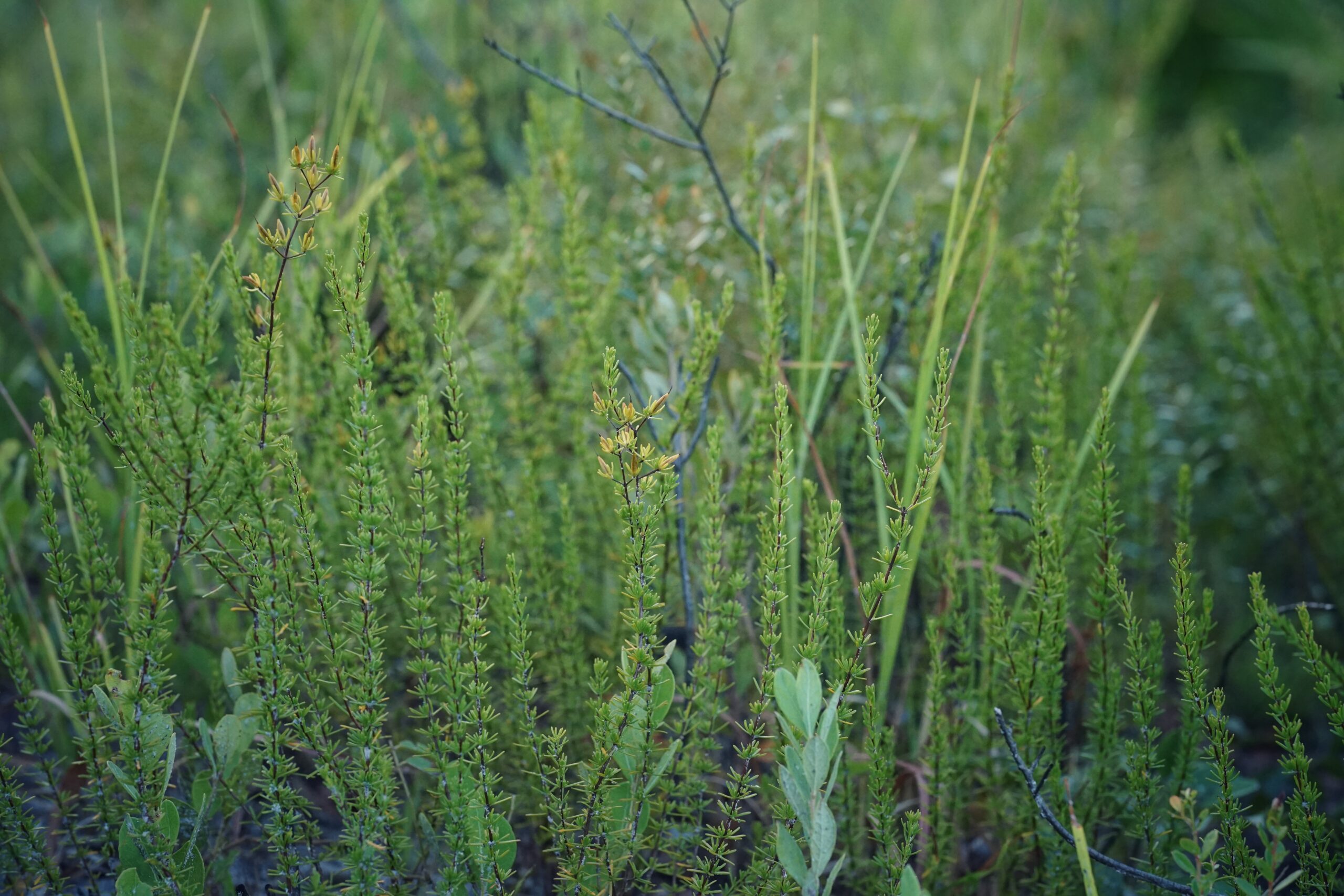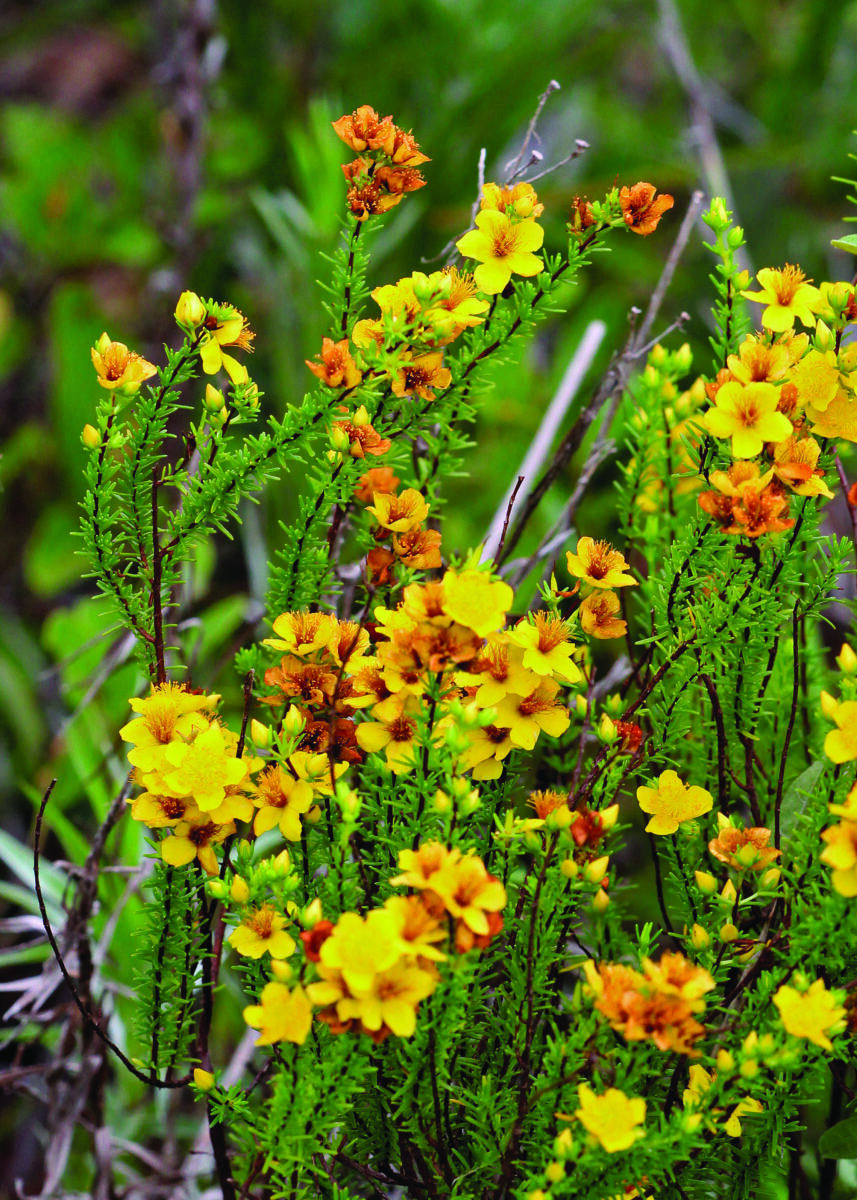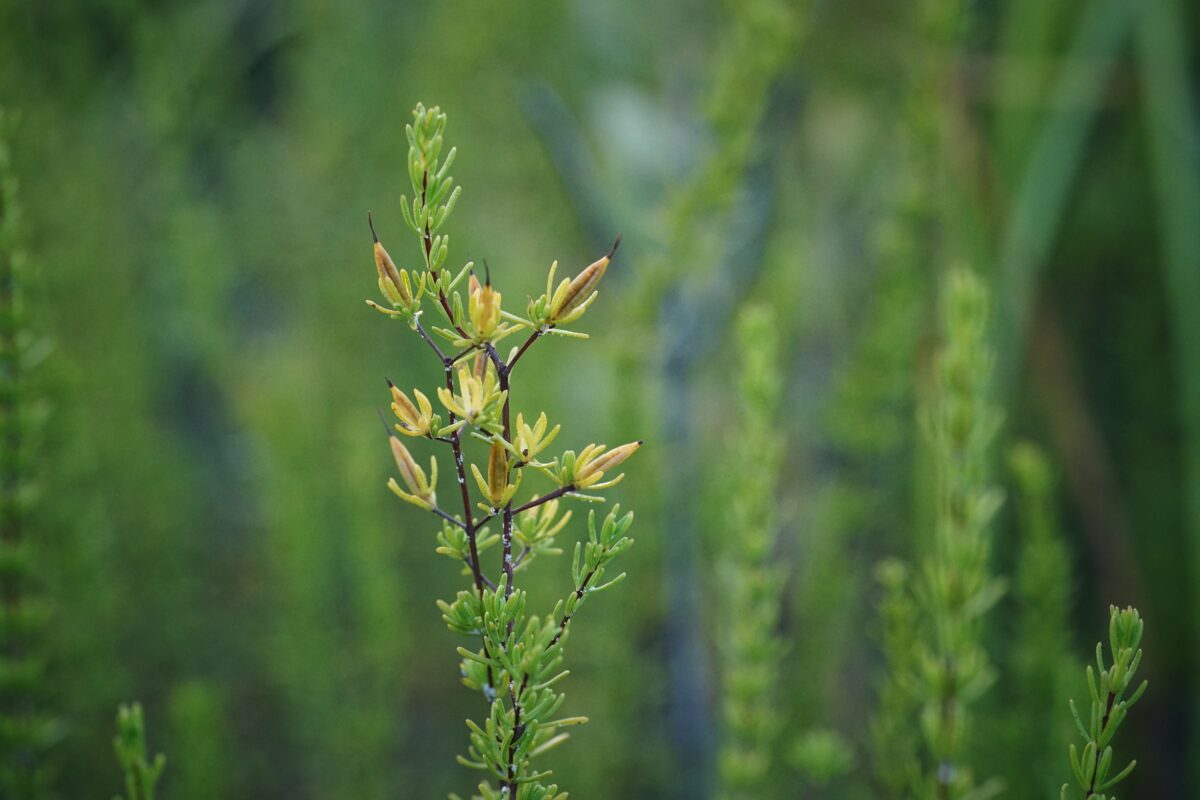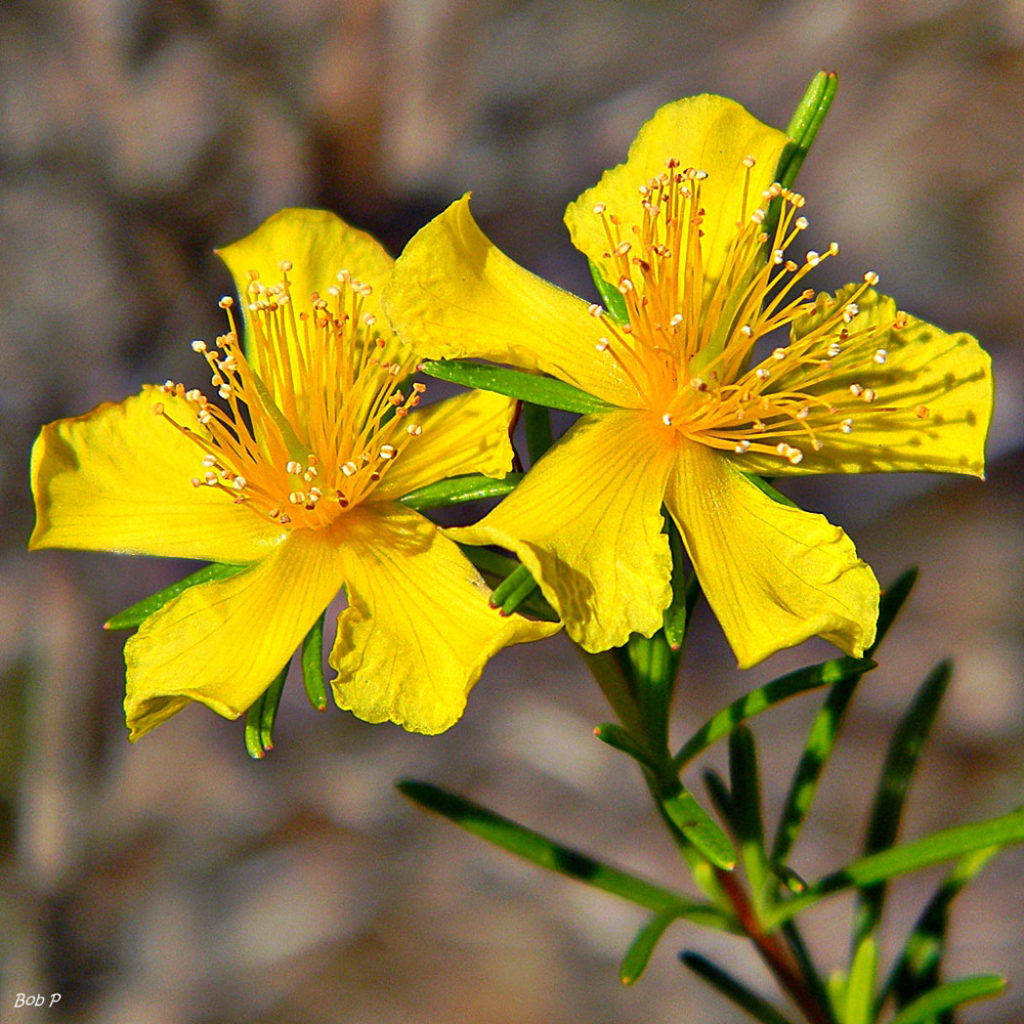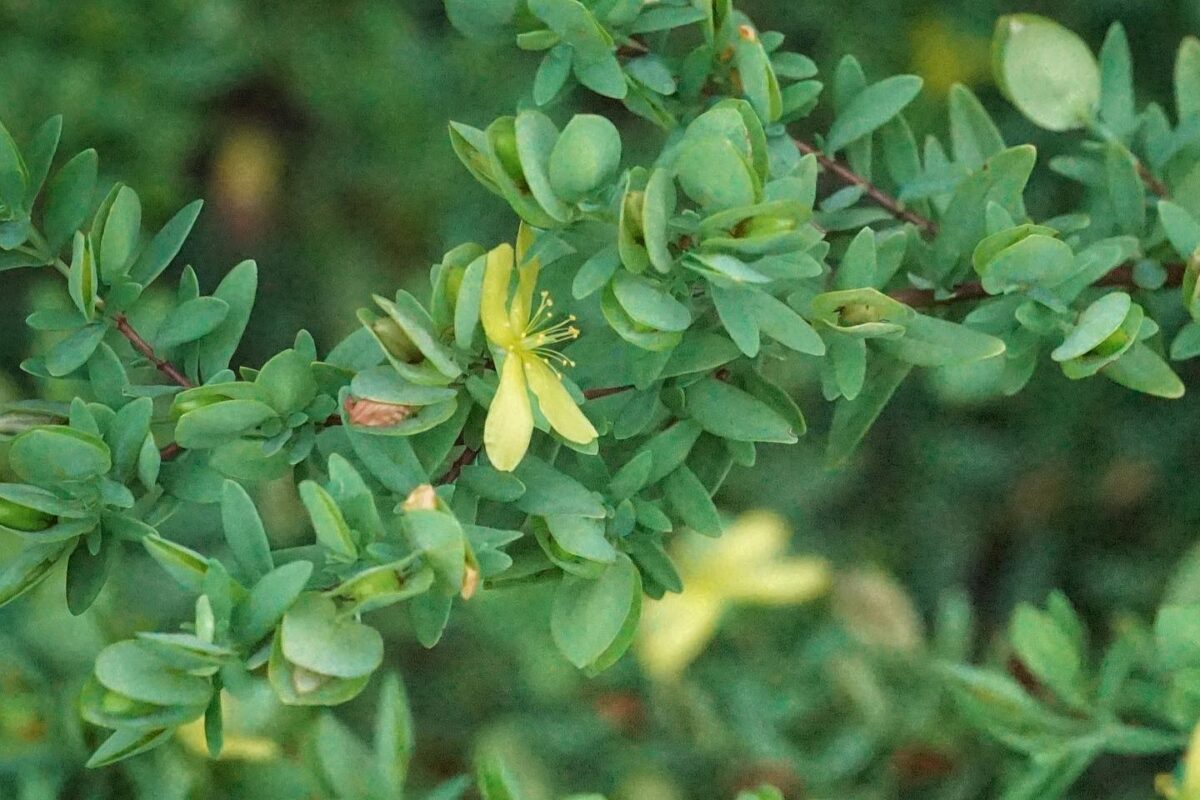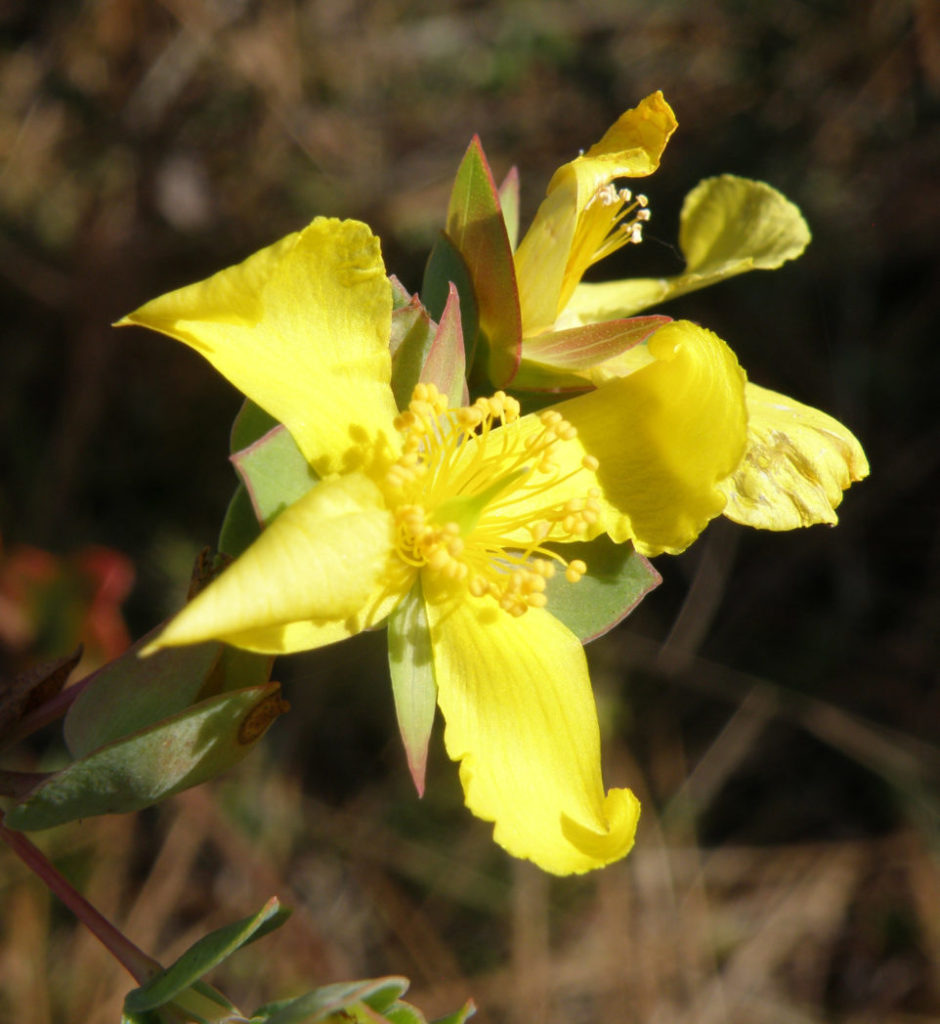Atlantic St. John’s wort
Pictured above: Atlantic St. John’s wort (Hypericum tenuifolium) by Emily Bell. Click on terms for botanical definitions. View post as a PDF.
St. John’s wort (Hypericum tenuifolium) is an evergreen shrub known for its outstanding ornamental features. Thirty-four species are found in Florida. All are native, and several are on state and federal endangered plant lists. Atlantic St. John’s wort is the most typical species encountered at native plant nurseries and plant sales. It occurs naturally in scrub, pine flatwoods, sandhills and coastal swales. Its many golden flowers bloom in the summer, attracting a host of native bees and other pollinators.
Atlantic St. John’s wort has small (less than 1 inch in diameter) bright yellow flowers with five petals, five sepals, and many obvious yellow-orange stamens. Leaves are dark green, needlelike and typically less than ½ inch long. They are sessile and oppositely arranged. Stems are reddish brown and sturdy. Seeds are born in capsules. The shrub has a delightful mounding and spreading shape.
Some taxonomists place the Hypericum genus in the Clusiaceae family, of which they consider Hypericaceae to be a subfamily (Hypericoideae). The species epithet tenuifolium is from the Latin tenuis, or “thin,” and folius, or “leaf.”
Family: Hypericaceae (St. John’s wort family)
Native range: Peninsula, central and western Panhandle
To see where natural populations of Atlantic St. John’s wort have been vouchered, visit florida.plantatlas.usf.edu.
Lifespan: Perennial
Soil: Well-drained sandy soils
Exposure: Full sun to partial shade
Growth habit: 1–1½’ tall with 2’+ spread
Propagation: Seed
Florida regions of landscape suitability: North, Central, South
Garden tips: Atlantic St. John’s wort can be used as a foundation plant, along a border or edge, or in a mass planting. It can adapt to a variety of soils, including clay and loam, as well as acidic and lightly alkaline soils. Plants are not salt tolerant and are moderately drought tolerant once established.
Caution: The St. John’s wort that is promoted as a supplement for use in treating depression is a non-native species. According to Dan Austin in his book, Florida Ethnobotany, using native St. John’s wort can lead to dermatitis or photosensitization due to a hypericin compound found in the plants.
Atlantic St. John’s wort is available from nurseries that specialize in Florida native plants. Visit www.PlantRealFlorida.org to find a nursery in your area.
Learn more about about Atlantic St. John’s wort from The Institute of Regional Conservation and the Florida Native Plant Society.
For information on other Hypericum species, see these resources:

